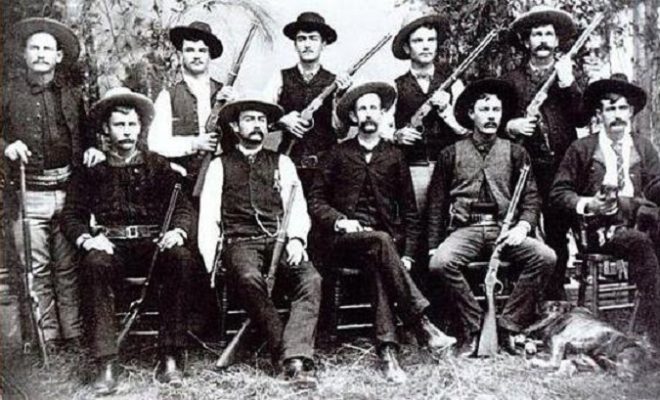With Violence and brutality increasing along the Rio Grande, from 1910 to 1914, many bloody tussles involved the Texas Rangers, and early on in World War I, problems in the border area centered around American draft dodgers, Mexican nationalism, and German intrigue. Through to 1919, scandal hit the Rangers with questions about morality and racist brutality, and in January 1919, the legislature overhauled the force in order to restore public confidence. They maintained four companies and reduced the number of recruits to fifteen per unit. They instituted more competitive salaries and reduced expense accounts. And they established citizen complaint procedures for ranger wrongdoing. Following these reforms, the force did well during the 1920s, and after the enactment of Prohibition, they patrolled the Rio Grande against alcohol smugglers and cattle rustlers, protected federal inspectors in the East Texas “tick war,” assisted in labor flare-ups and Ku Klux Klan demonstrations, and provided necessary policing of oil boomtowns such as Wink, Miranda City, Desdemona, Borger, and Mexia.
History
History of the Texas Rangers Part III: A Force to be Reckoned With

Photo: Facebook/Fire Hall Museum, Crowell Texas
With the Great Depression on the horizon (1929), the Texas Rangers again found their good fortune fading. Like many other line items, their budget was slashed and the force complement never rose above 45. They depended on free railroad passes and their own horses for transportation, and politically, they fared no better. By the fall of 1932 they openly supported Governor Ross Sterling against Miriam A. “Ma” Ferguson in the Democratic primary, and in January 1933, Ferguson fired every ranger for their partisanship upon taking office. Salaries were also slashed, and the force that was put into place was reduced to 32 in total. The result was a Texas that became a haven for lawless-types, including the likes of George “Machine Gun” Kelly, and the infamous Bonnie Parker and Clyde Barrow.

Photo: Facebook/The Texas Rangers
With Texas becoming a haven for ne’er-do-wells in the early 1930s, the state again required an overhaul to its law enforcement, paving the way for James Allred’s 1935 political platform based on the same premise. Upon becoming governor, he worked through the legislature to establish the Texas Department of Public Safety (DPS). Through this department, a three-person Public Safety Commission was formed, responsible for selecting a director and an assistant director, ultimately overseeing three units. These consisted of the Texas Rangers, the Highway Patrol, and a scientific crime lab and detection center called the Headquarters Division. Once again becoming relevant, the Texas Rangers’ basic structure remained intact, but hiring and promotion appointments were done through examinations and recommendations (as opposed to political patronage). Each applicant had to be between the ages of 30 and 45, be at least 5-foot-8-inches tall, and be sound in mind and body. Upon acceptance into their role, each one received the latest training in fingerprinting, ballistics, communications, and records, and each was required to be a dead-on shot. Although there were no educational provisions, each Texas Ranger was required to take a written exam and submit a weekly report of their activities. Any promotions were made on the basis of seniority and performance. Allred had succeeded in turning the Texas Rangers into the type of law enforcement the Lone Star State required.
Want to know more about the Texas Rangers? Read Part I, Part II, and Part IV of this series.
Sources:



